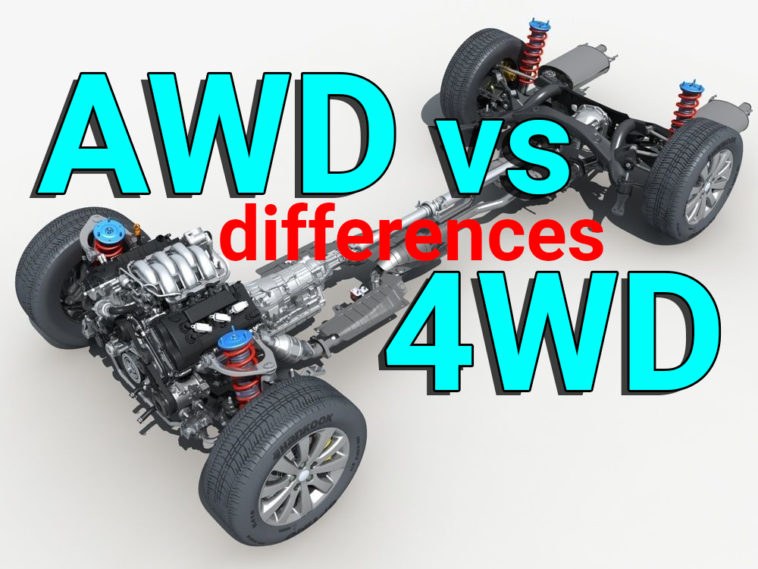Differences between all-wheel drive and four-wheel drive are very subtle. Both are used for driving in harsh winter conditions, wet roads, uneven terrains, and highways.
Understanding the differences between both drive systems is essential if you are looking forward to purchasing any of these.
Introduction
Although the AWD is relatively new, it is now preferred by most drivers. For those who want to drive on rugged surfaces, having a 4WD system is crucial. However, if you don’t understand 4WD completely, the disadvantages can affect you!

Four-Wheel Drive (4WD)
Four-wheel drive, 4WD or 4×4 is a vehicle drivetrain that is most commonly found in rugged SUVs and trucks. It is crafted to be used on unpaved wilderness. These include tough trucks like the Honda Ridgeline.
In simple words, a four-wheel drive is a system that sends equal power to all the wheels without giving more acceleration to any one wheel. Receiving power from transmission and engine, this means that each wheel will run at an equal speed.
While this equal power distribution is ideal for rugged and uneven surfaces as it helps maintain optimal levels of traction, it can be a problem when you are driving on road. It will make turning through tight roads inconvenient for you as these tyres are no longer in-sync. Since most 4WD systems are part-time – a type of drivetrain system in which you can switch actively between 4WD and 2WD, driving on well-paved highways and roads is not a problem.
Four-Wheel Drive: Part-Time vs Full-Time
Four-wheel drivetrain systems come in two variants, part-time 4WD and full-time 4WD.
Full-time 4WD is easy to understand. These cars don’t come with a two-wheel drive system. You only have to rely on a 4WD. This drivetrain system is mostly found in old trucks and SUVs. It is becoming obsolete, the reason being that no driver wants a car that is only limited to off-road driving conditions.
Part-time 4WD, as discussed earlier, allows you to switch between both 4WD and 2WD. When you are going through rugged terrains such as gravel, rocks, or mud, you can turn on the 4WD mode and as you take on the highways, you can switch back to the 2WD.
Some vehicles have a 4×4 system which has a transfer case. It features 4-low or 4-high. 4-high mode vectors and limits power to all wheels. This allows you to move hastily through soft surfaces.
4-low is used when you want maximum power. It is used when your vehicle is at low speed and your wheels need all the power to pass over something. For instance, if your car is stuck or you are going through rocks slowly, you can turn the 4-low mode on so your wheel receives maximum power.
Pros of 4WD
- Helps attain optimal traction on rugged and uneven terrains
- You can turn it on and off to control the fuel consumption
Cons of 4WD
- It is not flexible enough to be used in any type of condition
- Adds more weight to the vehicle and increases fuel consumption
- 4WD cars are expensive as most of the cost is associated with the production of these cars
All-Wheel Drive
Today, more and more cars are coming with an all-wheel drive system, from supercars to compact SUVs. It is the latest drivetrain system. This automated drivetrain system is considered more user-friendly as it does all the work for the driver.
Unlike 4WD, all-wheel drive systems send power to the wheels which need it the most. You can find AWD systems in nearly all body types from sedans and SUVs to minivans and coupes.
SUVs like Honda CR-V and Pilot Honda have AWD standard in their upper-level trims. You can also get AWD in other variants by paying some additional amount. Many new drivers prefer this drivetrain system as it is totally automated and does not require any human input. AWD can sense which tyre is losing traction and divert the power away from this wheel so it can regain traction with the surface.
AWD Pros
- Better grip and traction in all road conditions, whether it is off-road or on-road
- Offers better handling capabilities to cars
- No hassle of switching it on and off
AWD Cons
- Decreases fuel economy and adds weight to the vehicle
- Not ideal for extreme off-road conditions


